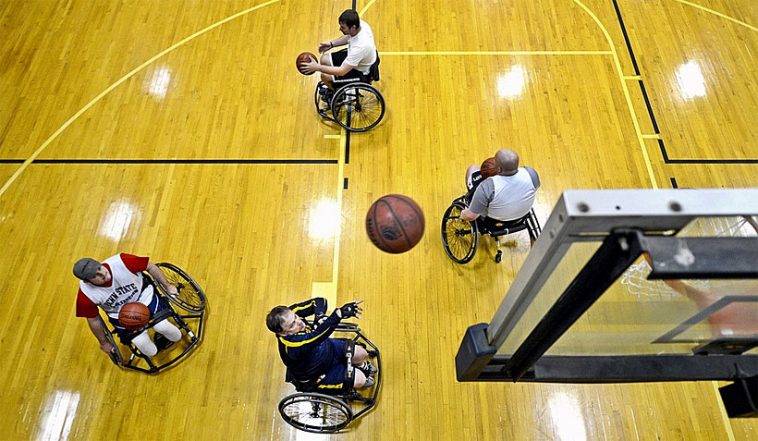- Like
- SHARE
- Digg
- Del
- Tumblr
- VKontakte
- Flattr
- Buffer
- Love This
- Save
- Odnoklassniki
- Meneame
- Blogger
- Amazon
- Yahoo Mail
- Gmail
- AOL
- Newsvine
- HackerNews
- Evernote
- MySpace
- Mail.ru
- Viadeo
- Line
- Comments
- Yummly
- SMS
- Viber
- Telegram
- JOIN
- Skype
- Facebook Messenger
- Kakao
- LiveJournal
- Yammer
- Edgar
- Fintel
- Mix
- Instapaper
- Copy Link
Introduction
Approximately one in 4 adults in the United States live with some type of disability, according to the Center for Disease Control (CDC).
With that said, it’s important to keep in mind that those who can and should reap the benefits that come along with a good workout.
However, due to the limitations that some may have, it’s necessary that a personal trainer modify their workouts appropriately so as to create an all-inclusive environment and beneficial workout routine.
The Importance of an All-inclusive Session
There are a number of benefits involved for those who may experience a disability when it comes to taking part in physical activity.
From improving muscle strength, flexibility, and even serving as an outlet for stress and anxiety as well as improving your overall outlook on life, working out can be a great way to stay healthy, fit, and active.
However, for some, there may be physical limitations that may make most workouts seem near impossible. For those with cerebral palsy, a neurological condition that involves affected movement and balance, exercise can play a major part in maintaining motor function in addition to a healthy lifestyle.
However, keep in mind that each individual with cerebral palsy often has different levels of ability that need to be taken into consideration.
As a personal trainer, it’s important to understand your client’s disability and adapt your workouts accordingly. This will ensure that they receive a full workout that works for their individual needs, without pushing them too hard.
Making a Healthy Change
When it comes to changing a workout routine for a client with disabilities, it’s important to have a relatively good understanding of their circumstance and how it affects them, as well as their physical limitations.
By taking your client’s needs into consideration you’ll be able to get an idea as to what exercises may be best for them in order to create the perfect routine, and which exercises are best avoided altogether.
For instance, those with a heart disability may not be able to do high-intensity workouts, while others living with diabetes may need more frequent breaks in order to eat or test their blood glucose levels.
The Perfect Workout for Everyone
When adapting a workout to your client’s needs, there are several exercises that you can incorporate, depending on their physical limitations.
For example, those who may have mobility issues can find a good workout in the water via exercises such as water aerobics, water jogging, and swimming, as opposed to doing so on land. This is because the water gives the body support, making exercise easier on the joints and muscles.
For those in a wheelchair, wheelchair basketball can offer a good high-intensity workout, whereas those who may not be able to do high-intensity workouts may be better suited for flexibility training like yoga or stretching exercises.
By keeping an open mind and collaborating with your client, you’re sure to find the perfect workout for them and their needs.
The Takeaway
As a personal trainer, it’s important to create the best workout routine for your client’s needs and goals.
However, it’s necessary to take their limitations into consideration by keeping an open mind and collaborating to ensure they get a proper workout despite any limitations.
About Theresa Duncan
Originally from Detroit, MI, Theresa has been offering health and fitness advice for the last 30 years while working as an engineer. She decided to turn her passion into a profession, and finds nothing more satisfying than helping others reach their health and fitness goals.

